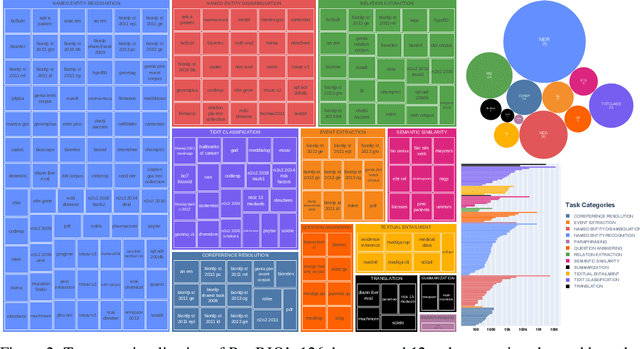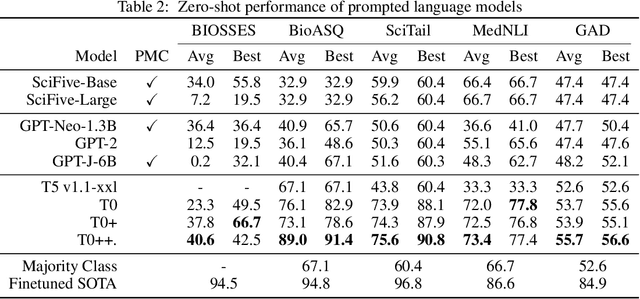Ruisi Su
BLOOM: A 176B-Parameter Open-Access Multilingual Language Model
Nov 09, 2022Abstract:Large language models (LLMs) have been shown to be able to perform new tasks based on a few demonstrations or natural language instructions. While these capabilities have led to widespread adoption, most LLMs are developed by resource-rich organizations and are frequently kept from the public. As a step towards democratizing this powerful technology, we present BLOOM, a 176B-parameter open-access language model designed and built thanks to a collaboration of hundreds of researchers. BLOOM is a decoder-only Transformer language model that was trained on the ROOTS corpus, a dataset comprising hundreds of sources in 46 natural and 13 programming languages (59 in total). We find that BLOOM achieves competitive performance on a wide variety of benchmarks, with stronger results after undergoing multitask prompted finetuning. To facilitate future research and applications using LLMs, we publicly release our models and code under the Responsible AI License.
BigBIO: A Framework for Data-Centric Biomedical Natural Language Processing
Jun 30, 2022



Abstract:Training and evaluating language models increasingly requires the construction of meta-datasets --diverse collections of curated data with clear provenance. Natural language prompting has recently lead to improved zero-shot generalization by transforming existing, supervised datasets into a diversity of novel pretraining tasks, highlighting the benefits of meta-dataset curation. While successful in general-domain text, translating these data-centric approaches to biomedical language modeling remains challenging, as labeled biomedical datasets are significantly underrepresented in popular data hubs. To address this challenge, we introduce BigBIO a community library of 126+ biomedical NLP datasets, currently covering 12 task categories and 10+ languages. BigBIO facilitates reproducible meta-dataset curation via programmatic access to datasets and their metadata, and is compatible with current platforms for prompt engineering and end-to-end few/zero shot language model evaluation. We discuss our process for task schema harmonization, data auditing, contribution guidelines, and outline two illustrative use cases: zero-shot evaluation of biomedical prompts and large-scale, multi-task learning. BigBIO is an ongoing community effort and is available at https://github.com/bigscience-workshop/biomedical
Pre-Trained Multilingual Sequence-to-Sequence Models: A Hope for Low-Resource Language Translation?
Apr 09, 2022



Abstract:What can pre-trained multilingual sequence-to-sequence models like mBART contribute to translating low-resource languages? We conduct a thorough empirical experiment in 10 languages to ascertain this, considering five factors: (1) the amount of fine-tuning data, (2) the noise in the fine-tuning data, (3) the amount of pre-training data in the model, (4) the impact of domain mismatch, and (5) language typology. In addition to yielding several heuristics, the experiments form a framework for evaluating the data sensitivities of machine translation systems. While mBART is robust to domain differences, its translations for unseen and typologically distant languages remain below 3.0 BLEU. In answer to our title's question, mBART is not a low-resource panacea; we therefore encourage shifting the emphasis from new models to new data.
Dependency Induction Through the Lens of Visual Perception
Sep 20, 2021



Abstract:Most previous work on grammar induction focuses on learning phrasal or dependency structure purely from text. However, because the signal provided by text alone is limited, recently introduced visually grounded syntax models make use of multimodal information leading to improved performance in constituency grammar induction. However, as compared to dependency grammars, constituency grammars do not provide a straightforward way to incorporate visual information without enforcing language-specific heuristics. In this paper, we propose an unsupervised grammar induction model that leverages word concreteness and a structural vision-based heuristic to jointly learn constituency-structure and dependency-structure grammars. Our experiments find that concreteness is a strong indicator for learning dependency grammars, improving the direct attachment score (DAS) by over 50\% as compared to state-of-the-art models trained on pure text. Next, we propose an extension of our model that leverages both word concreteness and visual semantic role labels in constituency and dependency parsing. Our experiments show that the proposed extension outperforms the current state-of-the-art visually grounded models in constituency parsing even with a smaller grammar size.
In Plain Sight: Media Bias Through the Lens of Factual Reporting
Sep 05, 2019



Abstract:The increasing prevalence of political bias in news media calls for greater public awareness of it, as well as robust methods for its detection. While prior work in NLP has primarily focused on the lexical bias captured by linguistic attributes such as word choice and syntax, other types of bias stem from the actual content selected for inclusion in the text. In this work, we investigate the effects of informational bias: factual content that can nevertheless be deployed to sway reader opinion. We first produce a new dataset, BASIL, of 300 news articles annotated with 1,727 bias spans and find evidence that informational bias appears in news articles more frequently than lexical bias. We further study our annotations to observe how informational bias surfaces in news articles by different media outlets. Lastly, a baseline model for informational bias prediction is presented by fine-tuning BERT on our labeled data, indicating the challenges of the task and future directions.
 Add to Chrome
Add to Chrome Add to Firefox
Add to Firefox Add to Edge
Add to Edge